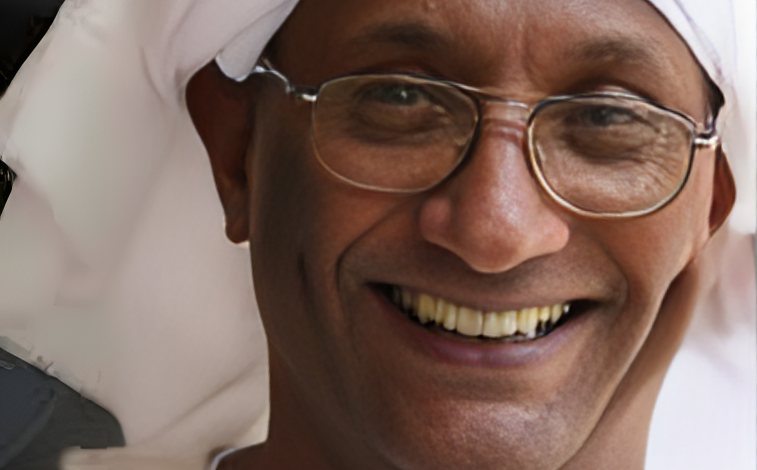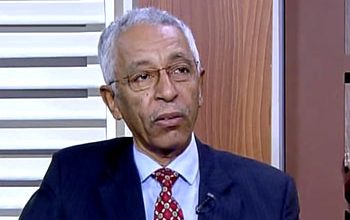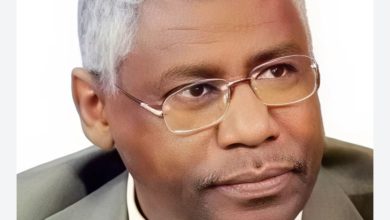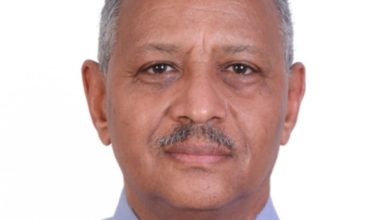Between Hamdok and Sir Al-Khatim Al-Khalifa: We Shall Overcome

By: Abdallah Ali Ibrahim
(Reflecting on the observation that the post-October Revolution government of 1956 was cornered by the marginalized masses, like a dog licking the floor of a tavern. And you tell me, Tirbas is scarred?)
I told Dr. Hamdok, the Prime Minister, during a Zoom meeting that you made a comparison between the October Revolution and the December Revolution — describing the first as capital-based and the second as regional — which I disagreed with. However, the comparison that holds true for me is that you are still the Prime Minister of the revolution and have not resigned, unlike Sir Al-Khatim Al-Khalifa, the Prime Minister of the October Revolution. His resignation was demanded by allies, perhaps even before enemies. Don’t do it.
It seems to me that the military, after their coup attempt failed, want to recreate Sir Al-Khatim Al-Khalifa, who led two different ministerial formations during October 1964. He was unanimously appointed to head the government immediately after the revolution in early November 1965, but later resigned under pressure from the counter-revolution, only to form a very different government in February 1965. Today’s military, acting as the linchpin of the counter-revolution from the presidential palace platform, seem to feel that their government is illegitimate without Hamdok. Through ongoing negotiations, they want him to form a second government on their terms, just as Al-Khalifa did with his second government.
The October Revolution
had split in both opinion and action into two platforms. The “Professional Front” (Jabhat al-Hay’at), the leading body of the revolution, held out at the Khartoum University Staff Club, while the forces of the counter-revolution — which included the Umma Party, the National Unionist Party, and the Muslim Brotherhood — gathered at the Imam Al-Mahdi Dome. The Dome platform strongly opposed the Professional Front, which they accused of being dominated by the communists, with remarkable zeal and efficiency.
What troubled them most was that the government formed after the revolution was composed mostly of professionals, workers, and farmers, while political parties — whether large or small — secured only a single ministerial position. The traditional political elite was alarmed by this “innovation,” fearing that it might become a permanent feature of Sudanese politics.
The Dome platform launched an aggressive campaign against the government, the Professional Front, and the communists — a campaign so fierce and calculated that it ultimately forced Al-Khalifa to resign on February 15, 1965. In his resignation letter, he expressed satisfaction with what his government had achieved in its short lifespan of just over three months in implementing the transitional program. He pointed to growing divisions among the factions that had signed the revolutionary charter. Some believed the government had deviated from its course, while others thought it had adhered to it. Al-Khalifa concluded that this disagreement had poisoned the political atmosphere.
Therefore, Al-Khalifa decided to resign “in the interest of the country’s welfare and stability, and to spare its people from discord and division.” He saw this as a solution that would give the warring parties an opportunity to reconsider the revolutionary charter and how to implement it in the remaining period of the transitional government. The Sovereignty Council accepted his resignation and tasked him with staying on as Prime Minister to form a new government.
Al-Midan newspaper, the official mouthpiece of the Communist Party, questioned the supposed threat to public safety that had forced the Prime Minister to resign. It was a rhetorical question because Al-Midan already knew the answer. What had driven the Prime Minister to resign was the mobilization of Umma Party’s Ansar forces from the rural areas to exert pressure — even physical force — to demand the resignation of the first revolutionary government on the grounds that it had deviated from the path of the revolution.
I personally witnessed a convoy of vehicles carrying hardened Ansar supporters, patrolling the streets of Khartoum. It was said that they were led by Sayed Al-Asam. This show of political muscle by the Ansar in February 1965 would not be the last of its kind. They would return in November of the same year to forcibly impose the dissolution of the Communist Party. Our teacher, Abdel Khaliq Mahjoub, described the Ansar’s siege of the Communist Party headquarters and their assaults on its members as “the violence of the countryside.”
I found the most vivid depiction of this display of Ansar muscle in February 1965 in the work of the astute historian Dr. Fadwa Abdel Rahman Ali Taha. She described how, after this event, the Prime Minister chose to prioritize national stability by resigning, thereby dissolving the first revolutionary government. She wrote:
“The situation escalated with the threat of large Ansar crowds coming to Khartoum from the White Nile, Kordofan, and the Blue Nile. On February 4, 1965, the capital was filled with thousands of Ansar who had arrived from the provinces. They threatened the government and demanded its resignation. The crowds marched through the streets of Khartoum, calling for the salvation of the country from the control of the Professional Front and the communists, and for the formation of a new government that would represent the nation’s supreme interests.”
Ahmed Al-Mahdi issued a statement on February 16, 1965, saying that the Umma Party had “the ability to change the government, but they preferred a peaceful political solution to resolve the political crisis in the country. If the political solution failed, however, the Umma Party would be forced to resort to the use of force.” Abdullah Abdel Rahman Naqd Allah, the party’s Secretary-General, repeated the same threat, stating that the Ansar would be mobilized from the party’s strongholds in the provinces if necessary.
Two significant differences stand out this time. First, the Ansar have adorned the platform of today’s revolution with their strong presence, rooted in the fierce struggle led by Imam Al-Sadiq Al-Mahdi against successive dictatorships that left the nation bloodstained. The second difference is Hamdok himself — fortified by the steadfast support of the masses on October 30, who rallied in defense of the democratic transition.
We are not a minority this time.



